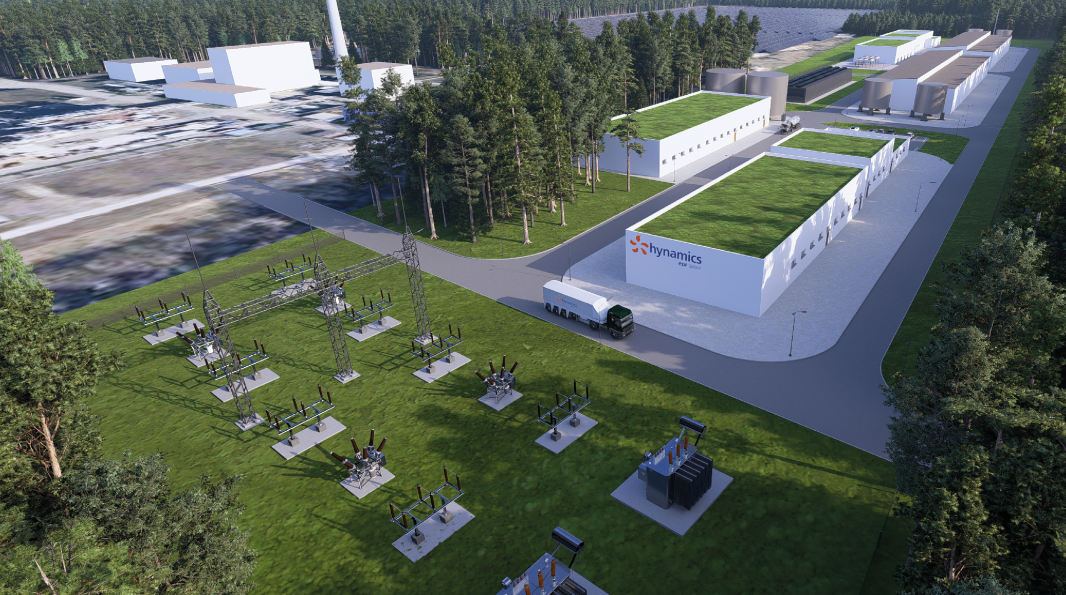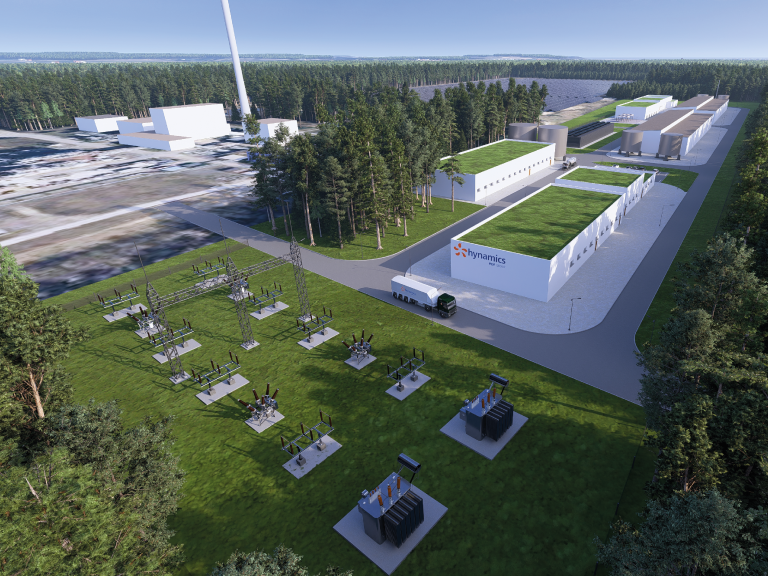A strategic project in the heart of Europe
Led by Hynamics Deutschland, the Steyerberg project is located near the future hydrogen backbone in Lower Saxony. Hynamics plans to install a 300 MW electrolyzer in a first phase, with the option to expand to 500 MW. This would allow an annual production of up to 50,000 tons of green hydrogen in compliance with the European Union’s RFNBO criteria (Renewable Fuels of Non-Biological Origin).
The hydrogen will be distributed across Germany, France, and the Benelux region through the European hydrogen backbone, replacing fossil fuels in industry and avoiding up to 1.4 million tonnes of CO₂ emissions annually. Therefore, the Steyerberg electrolysis project is set to play a major role in Europe’s transition to clean energy.

Accelerating the energytransition in industry
Located on a former chemical plant site, the project is part of a broader transformation to establish a new green industrial hub in Lower Saxony. The project is strongly supported by the local municipality as part of the transformation of the Oxxynova chemical plant’s site into a sustainable energy park (the GreenTec Park Steyerberg). Under the EU`s additionality criteria for RFNBO-compliant hydrogen the project will be supporting the construction of at least 500 MW of new renewable energy capacity.
Beyond its environmental goals, the project brings a strong economic dimension, by creating direct and indirect jobs locally as well as across Europe, especially during the construction and engineering phases.
A pillar of Europe's energy sovereignty
As Germany pushes forward with its ambitious energy transition, the Steyerberg project aims to boost the production of green hydrogen and strengthen Europe`s energy security by reducing reliance on imported fossil fuels. Its connection to the German hydrogen grid will allow the electrolyzer to supply multiple clients domestically and abroad, actively supporting the development of a low-carbon and RFNBO hydrogen market in Europe. This marks a decisive move toward a resilient, climate-neutral European industry.


“The Steyerberg electrolysis project reflects the ambition of Hynamics in Germany to help decarbonize industrial and energy sectors. By developing, building, and operating centralized electrolyzers along the German hydrogen backbone (‘H2-Kernnetz’) we enable a competitive and large-scale green hydrogen production, perfectly aligned with the needs of German and European industries”

